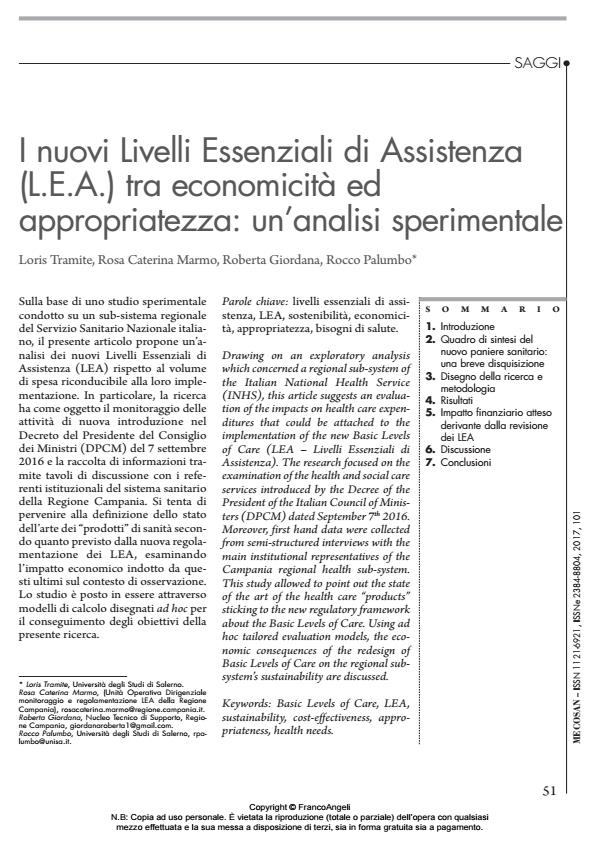I nuovi Livelli Essenziali di Assistenza (L.E.A.) tra economicità ed appropriatezza: un’analisi sperimentale
Journal title MECOSAN
Author/s Loris Tramite, Rosa Caterina Marmo, Roberta Giordana, Rocco Palumbo
Publishing Year 2017 Issue 2017/101
Language Italian Pages 24 P. 51-74 File size 23812 KB
DOI 10.3280/MESA2017-101004
DOI is like a bar code for intellectual property: to have more infomation
click here
Below, you can see the article first page
If you want to buy this article in PDF format, you can do it, following the instructions to buy download credits

FrancoAngeli is member of Publishers International Linking Association, Inc (PILA), a not-for-profit association which run the CrossRef service enabling links to and from online scholarly content.
Drawing on an exploratory analysis which concerned a regional sub-system of the Italian National Health Service (INHS), this article suggests an evaluation of the impacts on health care expenditures that could be attached to the implementation of the new Basic Levels of Care (LEA - Livelli Essenziali di Assistenza). The research focused on the examination of the health and social care services introduced by the Decree of the President of the Italian Council of Ministers (DPCM) dated September 7th 2016. Moreover, first hand data were collected from semi-structured interviews with the main institutional representatives of the Campania regional health sub-system. This study allowed to point out the state of the art of the health care "products" sticking to the new regulatory framework about the Basic Levels of Care. Using ad hoc tailored evaluation models, the economic consequences of the redesign of Basic Levels of Care on the regional subsystem’s sustainability are discussed.
Keywords: Basic Levels of Care, LEA, sustainability, cost-effectiveness, appropriateness, health needs.
- A spotlight on chronic patients’ hospitalization: Some exploratory insights Rocco Palumbo, Rosalba Manna, in Health Services Management Research /2019 pp.146
DOI: 10.1177/0951484818816833
Loris Tramite, Rosa Caterina Marmo, Roberta Giordana, Rocco Palumbo, I nuovi Livelli Essenziali di Assistenza (L.E.A.) tra economicità ed appropriatezza: un’analisi sperimentale in "MECOSAN" 101/2017, pp 51-74, DOI: 10.3280/MESA2017-101004